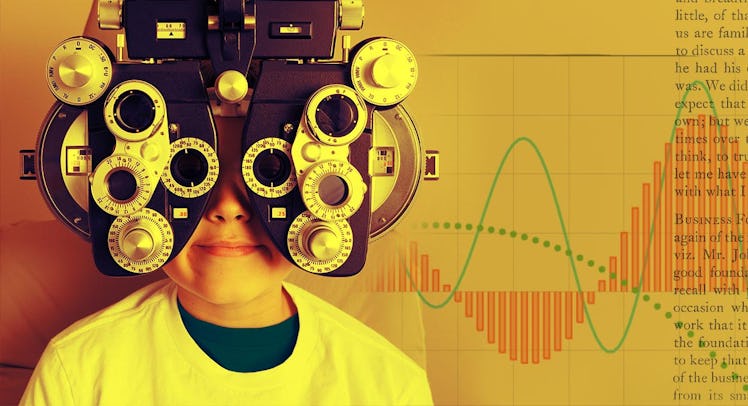How to Tell If a Child Has a Behavorial Disorder or Bad Eyesight
Vision problems can sometimes look like symptoms for more profound issues. Early eye-doctor visits are essential.

Newborn babies are drawn to shapes and contrast. By two months their eyes begin to work together and they start tracking motion. At six months old a baby’s vision is developed enough to see detail, depth, and color. At three years, children see like adults—except when they don’t. Vision issues aren’t uncommon in toddlers, roughly 5 percent of whom need glasses, but they often go undiagnosed because children don’t know better and adults struggle to spot behavioral changes related to diminished eyesight among all those other behavioral changes. And that’s what makes eye problems tricky: They look like other problems. Young children who struggle to see are diagnosed with autism. Kids go from the back row to remedial classes. Happens all the time.
“A parent can tell when the baby is really looking and engaged, and the difference between that and just staring through you into space,” says Dr. Glen Steele, chairman of the American Optometric Association InfantSEE program.
The issue is figuring out what it means when a kid is not optically engaged. Given how common autism has become, there’s a fair chance that a child might be on the spectrum. But there’s also a fair chance the kid just can’t see well. The important thing, Steele says, is to always remember that complex behaviors can be the result of simple disorders. Poor eyesight looks like a lot of cognitive disorders because vision is so integral to behavior. That does not mean parents shouldn’t pursue screening from a brain specialist if they notice a problem. It does mean that a vision test should be part of that screening and happen early in the process to rule out poor eyesight.
“There’s a link to vision in so many of the ways we judge developmental milestones, cognitive milestones and social-emotional milestones in young babies before they can talk and interact with us in that way,” Steele explains.
As children grow and become verbal, the signs that they might have vision problems become a bit more typical. They might sit too close to the TV, or put their faces very close to, or far away from a book. Parents just need to be observant and ask questions. A kid who sits close to the TV, for instance, might just be doing that because they want to be right up in the action.
The one exception to the typical signs of poor eyesight is squinting. “I don’t find that young kids squint. It’s more that they just ignore things they can’t see,” says Steele.
Another sign of vision problems in children who are very active is running into furniture. That said, it’s important for a parent to understand where the kid is focused. If they were looking 5 feet ahead of them and side-swipe a coffee table, fine. If they were looking right in front of them, and run into the table, there may be an issue.
Finally, when both parents have vision problems, they should be far more watchful for vision problem in their children. That’s especially true if they are nearsighted. “Research shows that kids who have both parents who are nearsighted have a much higher incidence of being near-sighted,” Stelle says.
Importantly, eye exams in the first year allow doctors to get ahead of vision problems. If they are discovered in normal school screenings it might be too late for therapy. And there are therapies that exist to help correct vision in the youngest children so that they can see clearly as adults.